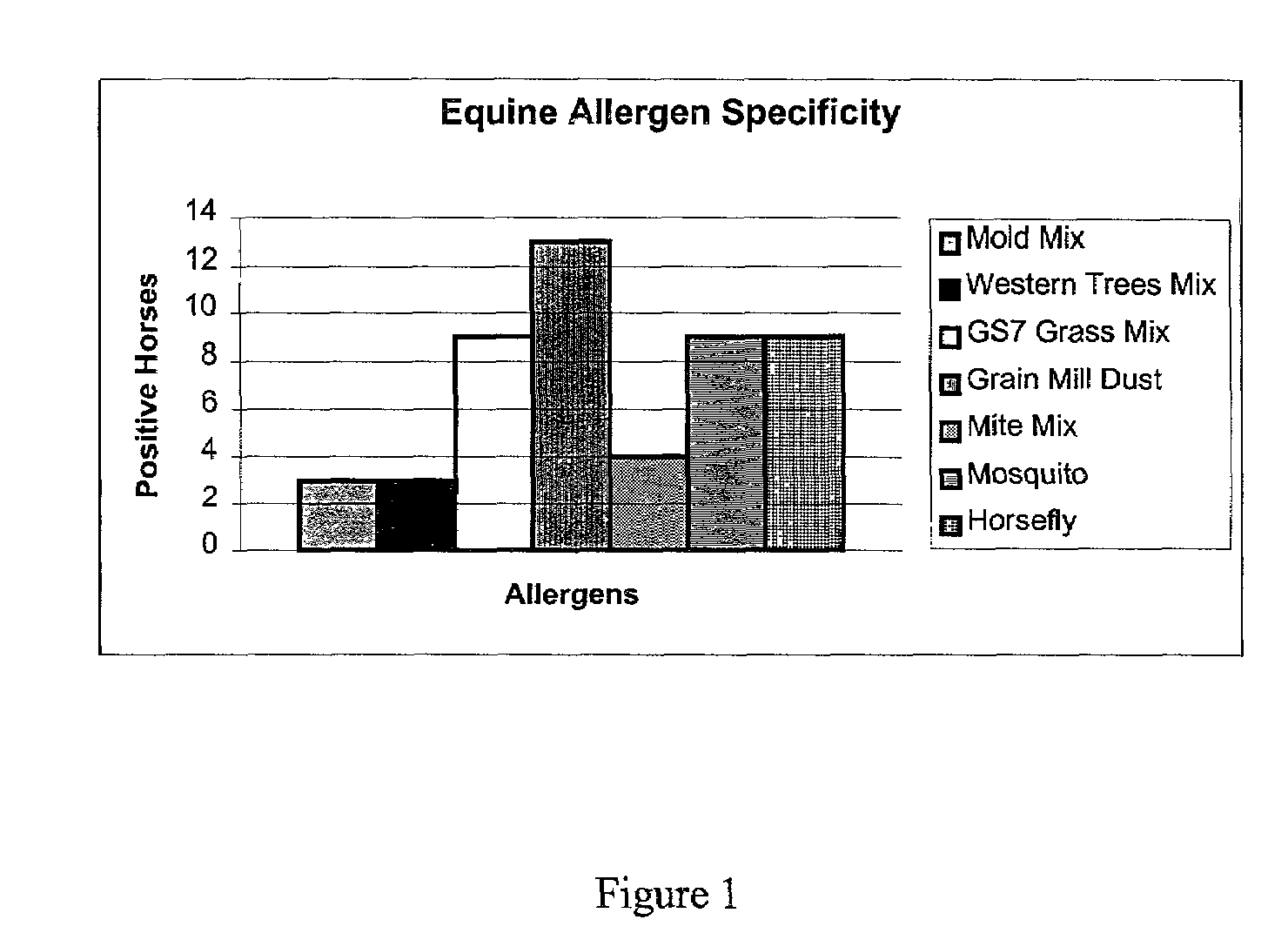Epsilon immunoglobulin chain derived peptides for induction of anti-IgE antibodies
a technology of immunoglobulin and immunoglobulin, which is applied in the field of immunoglobulin chain derived peptides for induction of anti-ige antibodies, can solve the problems of difficult diagnosis and treatment of allergic diseases in non-human mammals, high levels of equine ige, and major economic loss in the horse industry
- Summary
- Abstract
- Description
- Claims
- Application Information
AI Technical Summary
Benefits of technology
Problems solved by technology
Method used
Image
Examples
example 1
Generation and Characterization of Antibodies Specific for Equine IgE
[0092]Materials and Methods
[0093]Selection of Peptides: The entire amino acid sequence of equine IgE, based on the predicted 566 translated amino acids, was used to generate algorithms to predict accessible epitopes. The algorithms combine the Hopp and Woods hydrophilicity scale, surface probability and accessibility scales, Karplus and Schulz flexibility scale, and Jameson-Wolf antigenic index. Chou and Fasman algorithms were used to determine secondary structure including turns, alpha helices, and beta sheets. Based on data obtained from the above algorithms, six 15 amino acid length peptides were selected for synthesis. The following is a list of the chosen peptides and their location on the epsilon heavy chain: P1 (VTYKRHDLLRTRPRK; SEQ ID NO:1) end portion of C2, P2 (RTRPRKCTESEPRGV; SEQ ID NO:2) end portion of C2, P3 (LAACCKDTKTTNITL; SEQ ID NO:3) beginning of C1, P4 (IQTDQQATTRPKSQW; SEQ ID NO:4) early portio...
example 2
Use of Equine IgE Antibodies to Detect IgE Protein in Horses
[0108]Materials and Methods
[0109]Standardized Allergen Specific Equine IgE ELISA: Sixty-six horses with various clinical signs of allergy were tested in an antigen-specific IgE ELISA against the following seven antigens: mold mix (Greere M03-34-1F4), GS7 grass mix, (P27-40-3F14), western tree mix (P39-1-1F2), grain mill dust mix (D02-22-1X2), mosquito mix (B55-8-1P1), mite mix (B060-73-1C1), and horsefly mix (B43-21-1F4). Allergen-specific ELISA's were performed in the same manner as the ovalbumin-specific ELISA. The rabbit anti-P5 peptide antibody was affinity purified before use. Undiluted serum from each test horse was assayed. The negative control was a pool of horse serum from eight non-allergic horses. Values on the ELISA were recorded as percent of negative control. Anything above 200% is a positive result.
[0110]Results
[0111]Allergen Specific Equine IgE ELISA: Sixty-four horses, with clinical signs of allergy, were b...
PUM
| Property | Measurement | Unit |
|---|---|---|
| Wavelength | aaaaa | aaaaa |
| Composition | aaaaa | aaaaa |
| Immunogenicity | aaaaa | aaaaa |
Abstract
Description
Claims
Application Information
 Login to View More
Login to View More - R&D
- Intellectual Property
- Life Sciences
- Materials
- Tech Scout
- Unparalleled Data Quality
- Higher Quality Content
- 60% Fewer Hallucinations
Browse by: Latest US Patents, China's latest patents, Technical Efficacy Thesaurus, Application Domain, Technology Topic, Popular Technical Reports.
© 2025 PatSnap. All rights reserved.Legal|Privacy policy|Modern Slavery Act Transparency Statement|Sitemap|About US| Contact US: help@patsnap.com

